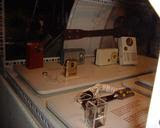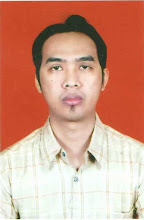1. First Generation (1939-1954) - vacuum tube
- 1937 - John V. Atanasoff designed the first digital electronic computer
- 1939 - Atanasoff
and Clifford Berry demonstrate in Nov. the ABC prototype
- 1941 - Konrad Zuse in Germany developed in secret the Z3
- 1943 - In Britain, the Colossus was designed in secret at Bletchley Park to decode German messages
- 1944 - Howard Aiken developed the Harvard Mark I mechanical computer for the Navy
- 1945 - John W. Mauchly and J. Presper Eckert built ENIAC at U of PA for the U.S. Army
- 1946 - Mauchly and Eckert start Electronic Control Co., received grant from National Bureau of Standards to build a ENIAC-type computer with magnetic tape input/output, renamed UNIVAC in 1947 but run out of money, formed in Dec. 1947 the new company Eckert-Mauchly Computer Corporation (EMCC).
- 1948 - Howard Aiken developed the Harvard Mark III electronic computer with 5000 tubes
- 1948 - U of Manchester in Britain developed the SSEM Baby electronic computer with CRT memory
- 1949 - Mauchly and Eckert in March successfully tested the BINAC stored-program computer for Northrop Aircraft, with mercury delay line memory and a primitive magentic tape drive; Remington Rand bought EMCC Feb. 1950 and provided funds to finish UNIVAC
- 1950- Commander William C. Norris led Engineer ing Research Associates to develop the Atlas, based on the secret code-breaking computers used by the Navy in WWII; the Atlas was 38 feet long, 20 feet wide, and used 2700 vacuum tubes
- 1951 - S. A. Lebedev developed the MESM computer in Russia
- 1951 - Remington Rand successfully tested UNIVAC March 30, 1951, and anno
unced to the public its sale to the Census Bureau June 14, 1951, the first commercial computer to feature a magnetic tape storage system, the eight UNISERVO tape drives that stood separate from the CPU and control console on the other side of a garage-size room. Each tape drive was six feet high and three feet wide, used 1/2-inch metal tape of nickel-plated bronze 1200 feet long, recorded data on eight channels at 100 inches per second with a transfer rate of 7,200 characters per second. The comp
lete UNIVAC system weighed 29,000 pounds, included 5200 vacuum tubes, and an offline typewriter-printer UNIPRINTER with an attached metal tape drive. Later, a punched card-to-tape machine was added to read IBM 80-column and Remington Rand 90-column cards. - 1952 - Remington Rand bought the ERA in Dec. 1951 and combined the UNIVAC product line in 1952: the ERA 1101 computer became the UNIVAC 1101. The UNIVAC I was used in November to calculate the presidential election returns and successfully predict the winner, although it was not trusted by the TV networks who refused to use the prediction.
- 1954 - The SAGE aircraft-warning system was the largest vacuum tube computer system ever built. It began in 1954 at MIT's Lincoln Lab with funding from the Air Force. The first of 23 Direction Centers went online in Nov. 1956, and the last in 1962. Each Center had two 55,000-tube computers built by IBM, MIT, AND Bell Labs. The 275-ton computers known as "Clyde" were based on Jay Forrester's Whirlwind I and had magnetic core memory, magentic drum and magnetic tape storage. The Centers were connected by an early network, and pioneered development of the modem and graphics display.
2.Second Generation Computers (1954 -1959) - transistor
- 1950 - National Bureau of Standards (NBS) introduced its Standards Eastern Automatic Computer (SEAC) with 10,000 newly developed germanium diodes in its logic circuits, and the first magnetic disk drive designed by Jacob Rabinow
- 1953 - Tom Watson, Jr., led IBM to introduce the model 604 computer, its first with transistors, that became the basis of the model 608 of 1957, the first solid-state computer for the commercial market. Transistors were expensive at first, cost $8 vs. $.75 for a vacuum tube. But Watson was impressed with the new transistor radios and gave them to his engineers to study. IBM also developed the 650 Magnetic Drum Calculator, the first by IBM to use magnetic drum memory rather punched cards, and began shipment of the 701 scientific "Defense Calculator" that was the first of the Model 700 line that dominated main frame computers for the next decade
- 1955 - IBM introduced the 702 business computer; Watson on the cover of Time magazine March 28
- 1956 - Bendix G-15A small business computer sold for only $45,000, designed by Harry Huskey of NBS
- 1959 - General Electric Corporation delivered its Electronic Recording Machine Accounting (ERMA) computing system to the Bank of America in California; based on a design by SRI, the ERMA system employed Magnetic Ink Character Recognition (MICR) as the means to capture data from the checks and introduced automation in banking that continued with ATM machines in 1974.
3. Third Generation Computers (1959 -1971) - IC
- 1959 - Jack Kilby of Texas Instruments patented the first integrated circuit i
n Feb. 1959; Kilby had made his first germanium IC in Oct. 1958; Robert Noyce at Fairchild used planar process to make connections of components within a silicon IC in early 1959; the first commercial product using IC was the hearing aid in Dec. 1963; General Instrument made LSI chip (100+ components) for Hammond organs 1968
- 1964 - IBM produced SABRE, the first airline reservation tracking system for American Airlines; IBM announced the System/360 all-purpose co
mputer, using 8-bit character word length (a "byte") that was pioneered in the 7030 of April 1961 that grew out of the AF contract of Oct. 1958 following Sputnik to develop transistor computers for BMEWS
- 1968 - DEC introduced the first "mini-computer", the PDP-8, named after the mini-skirt; DEC was founded in 1957 by Kenneth H. Olsen who came for the SAGE project a
t MIT and began sales of the PDP-1 in 1960
- 1969 - Development began on ARPAnet, funded by the DOD
- 1971 - Intel produced large scale integrated (LSI) circuits that were used in the digital delay line, the first digital audio device.
4. Fourth Generation (1971-1991) - microprocessor
- 1971 - Gilbert Hyatt at Micro Computer Co. patented the microprocessor; Ted Hoff at Intel in February introduced the 4-bit 4004, a VSLI of 2300 components, for the Japanese company Busicom to create a single chip for a calculator; IBM introduced the first 8-inch "memory disk", as it was called then, or the "floppy disk" later; Hoffmann-La Roche patented the passive LCD display for calculators and watches; in November Intel announced the first microcomputer, the MCS-4; Nolan Bushnell designed the first commercial arcade video game "Computer Space"
- 1972 - Intel made the 8-bit 8008 and 8080 microprocessors; Gary Kildall wrote his Control Program/Microprocessor (CP/M) disk operating system to provide instructions for floppy disk drives to work with the 8080 processor. He offered it to Intel, but was turned down, so he sold it on his own, and soon CP/M was the standard operating system for 8-bit microcomputers; Bushnell created Atari and introduced the successful "Pong" game
- 1973 - IBM developed the first true sealed hard disk drive, called the "Winchester" after the rifle company, using two 30 Mb platters; Robert Metcalfe at Xerox PARC created Ethernet as the basis for a local area network, and later founded 3COM
- 1974 - Xerox developed the Alto workstation at PARC, with a monitor, a graphical user interface, a mouse, and an ethernet card for networking
- 1975 - the Altair personal computer is sold in kit form, and influenced Steve Jobs and Steve Wozniak
- 1976 - Jobs and Wozniak developed the Apple personal computer; Alan Shugart introduced the 5.25-inch floppy disk
- 1977 - Nintendo in Japan began to make computer games that stored the data on chips inside a game cartridge that sold for around $40 but only cost a few dollars to manufacture. It introduced its most popular game "Donkey Kong" in 1981, Super Mario Bros in 1985
- 1978 - Visicalc spreadsheet software was written by Daniel Bricklin and Bob Frankston
- 1979 - Micropro released Wordstar that set the standard for word processing software
- 1980 - IBM signed a contract with the Microsoft Co. of Bill Gates and Paul Allen and Steve Ballmer to supply an operating system for IBM's new PC model. Microsoft paid $25,000 to Seattle Computer for the rights to QDOS that became Microsoft DOS, and Microsoft began its climb to become the dominant computer company in the world.
- 1984 - Apple Computer introduced the Macintosh personal computer January 24.
- 1987 - Bill Atkinson of Apple Computers created a software program called HyperCard that was bundled free with all Macintosh computers. This program for the first time made hypertext popular and useable to a wide number of people. Ted Nelson coined the terms "hypertext" and "hypermedia" in 1965 based on the pre-computer ideas of Vannevar Bush published in his "As We May Think" article in the July 1945 issue of The Atlantic Monthly.
| Intel 4004 microprocessor in 1971, from Intel Museum Wozniak and Jobs introduced Apple II in 1977, from History of Apple | Apple I of 1976 , from Smithsonian NMAH MITS Altair 8800A 1975 fromApple II personal computer 1978 with 5.25-inch Disk drives, from SDCM - cu |
| |
| |
5. Fifth Generation (1991 and Beyond)
- 1991 - World-Wide Web (WWW) was developed by Tim Berners-Lee and released by CERN.
- 1993 - The first Web browser called Mosaic was created by student Marc Andreesen and programmer Eric Bina at NCSA in the first 3 months of 1993. The beta version 0.5 of X Mosaic for UNIX was released Jan. 23 1993 and was instant success. The PC and Mac versions of Mosaic followed quickly in 1993. Mosaic was the first software to interpret a new IMG tag, and to display graphics along with text. Berners-Lee objected to the IMG tag, considered it frivolous, but image display became one of the most used features of the Web. The Web grew fast because the infrastructure was already in place: the Internet, desktop PC, home modems connected to online services such as AOL and Compuserve
- 1994 - Netscape Navigator 1.0 was released Dec. 1994, and was given away free, soon gaining 75% of world browser market.
- 1996 - Microsoft failed to recognized the importance of the Web, but finally released the much imporoved browser Explorer 3.0 in the summer.
| The raveMP player sells for $269 and can store more than an hour of MP3 music | |































